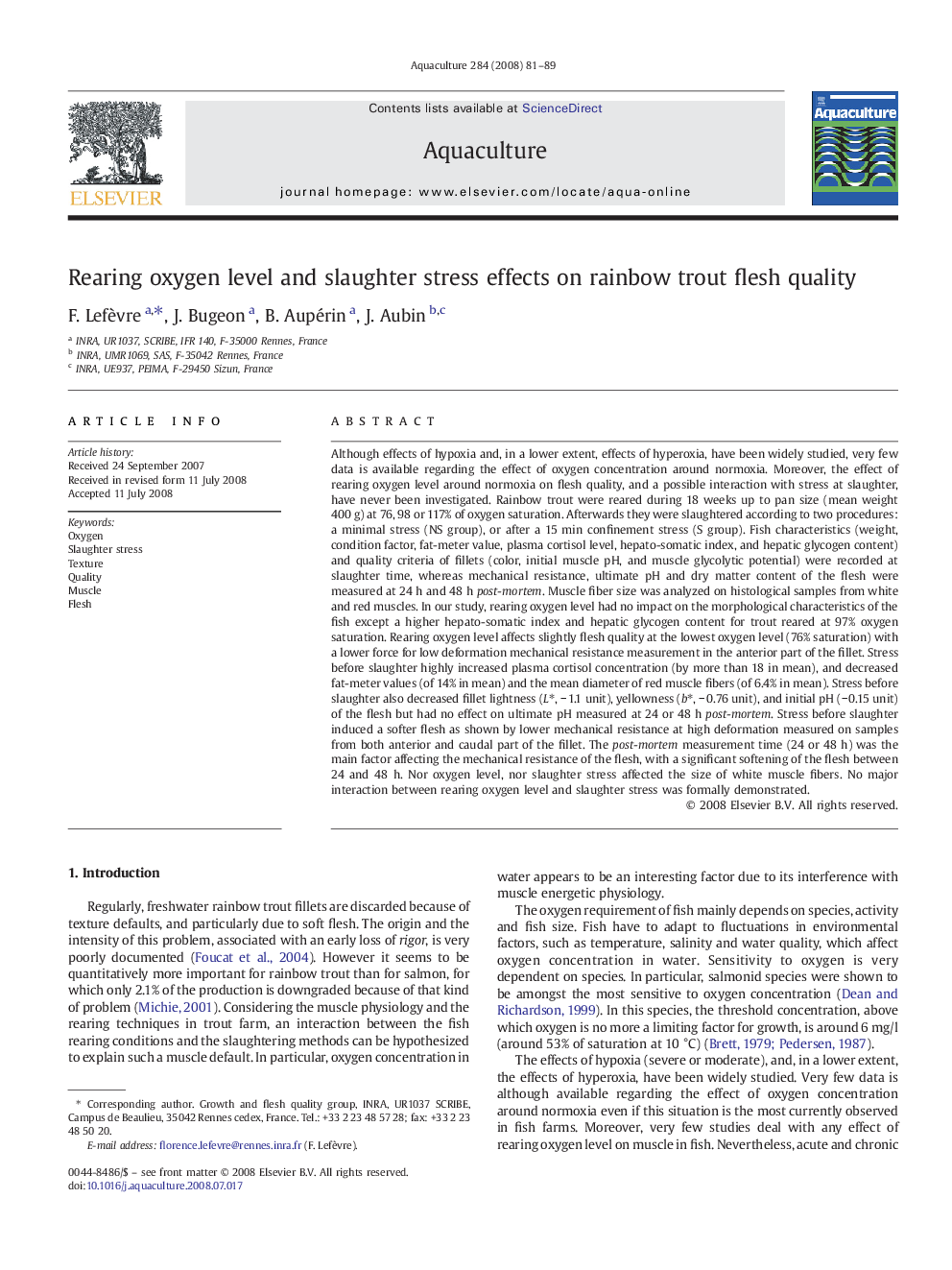| کد مقاله | کد نشریه | سال انتشار | مقاله انگلیسی | نسخه تمام متن |
|---|---|---|---|---|
| 2424435 | 1552957 | 2008 | 9 صفحه PDF | دانلود رایگان |

Although effects of hypoxia and, in a lower extent, effects of hyperoxia, have been widely studied, very few data is available regarding the effect of oxygen concentration around normoxia. Moreover, the effect of rearing oxygen level around normoxia on flesh quality, and a possible interaction with stress at slaughter, have never been investigated. Rainbow trout were reared during 18 weeks up to pan size (mean weight 400 g) at 76, 98 or 117% of oxygen saturation. Afterwards they were slaughtered according to two procedures: a minimal stress (NS group), or after a 15 min confinement stress (S group). Fish characteristics (weight, condition factor, fat-meter value, plasma cortisol level, hepato-somatic index, and hepatic glycogen content) and quality criteria of fillets (color, initial muscle pH, and muscle glycolytic potential) were recorded at slaughter time, whereas mechanical resistance, ultimate pH and dry matter content of the flesh were measured at 24 h and 48 h post-mortem. Muscle fiber size was analyzed on histological samples from white and red muscles. In our study, rearing oxygen level had no impact on the morphological characteristics of the fish except a higher hepato-somatic index and hepatic glycogen content for trout reared at 97% oxygen saturation. Rearing oxygen level affects slightly flesh quality at the lowest oxygen level (76% saturation) with a lower force for low deformation mechanical resistance measurement in the anterior part of the fillet. Stress before slaughter highly increased plasma cortisol concentration (by more than 18 in mean), and decreased fat-meter values (of 14% in mean) and the mean diameter of red muscle fibers (of 6.4% in mean). Stress before slaughter also decreased fillet lightness (L⁎, − 1.1 unit), yellowness (b⁎, − 0.76 unit), and initial pH (− 0.15 unit) of the flesh but had no effect on ultimate pH measured at 24 or 48 h post-mortem. Stress before slaughter induced a softer flesh as shown by lower mechanical resistance at high deformation measured on samples from both anterior and caudal part of the fillet. The post-mortem measurement time (24 or 48 h) was the main factor affecting the mechanical resistance of the flesh, with a significant softening of the flesh between 24 and 48 h. Nor oxygen level, nor slaughter stress affected the size of white muscle fibers. No major interaction between rearing oxygen level and slaughter stress was formally demonstrated.
Journal: Aquaculture - Volume 284, Issues 1–4, 1 November 2008, Pages 81–89